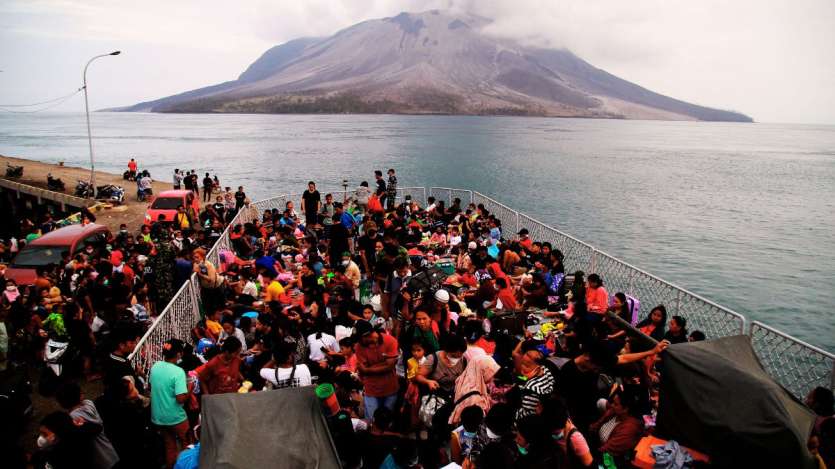 |
|
Indonesia, an archipelago nation nestled in Southeast Asia, is renowned for its stunning natural beauty, rich culture, and vibrant biodiversity. However, beneath its idyllic facade lies a volatile geological reality: Indonesia is one of the most volcanically active regions on Earth. This article delves into the reasons behind Indonesia's vulnerability to volcanic eruptions, exploring the intricate interplay of tectonic forces, geological processes, and the nation's strategic location within the Pacific Ring of Fire.
The Pacific Ring of Fire, a horseshoe-shaped zone encircling the Pacific Ocean, is characterized by a high concentration of active volcanoes and frequent earthquakes. Indonesia's strategic location within this seismically active zone is a primary factor contributing to its volcanic activity. The Ring of Fire is a consequence of the convergence of several tectonic plates, including the Eurasian, Australian, and Pacific plates. These plates are constantly in motion, colliding, grinding, and sliding past each other, creating immense pressure and instability that manifests as volcanic eruptions and seismic tremors.
At the heart of Indonesia's volcanic activity lies the process of subduction. Subduction occurs when one tectonic plate, known as the denser oceanic plate, dives beneath another plate, typically a less dense continental plate. This collision generates immense heat and pressure, causing the oceanic plate to melt partially, forming a molten rock called magma. The magma, being less dense than the surrounding rock, rises towards the surface, eventually erupting as volcanoes. Indonesia experiences a significant amount of subduction, particularly along its western and northern borders, where the Australian Plate is being subducted beneath the Eurasian Plate. This ongoing subduction process creates numerous volcanic arcs, chains of volcanoes that run parallel to the subduction zone, contributing to the high density of volcanoes in Indonesia.
The subduction process is not merely a passive geological phenomenon; it is a dynamic and active process that generates frequent earthquakes. These earthquakes, often of significant magnitude, can further trigger volcanic eruptions, creating a cascading effect that increases the overall volcanic activity in the region. Furthermore, the presence of volcanic hotspots in Indonesia further complicates its geological landscape. Volcanic hotspots are areas where magma from deep within the Earth's mantle rises to the surface, independent of plate boundaries. These hotspots create volcanic activity even in regions that are not located on plate boundaries, adding to the already high level of volcanic activity in Indonesia.
Many of Indonesia's volcanoes are stratovolcanoes, characterized by their large, steep-sided cones built up by layers of solidified lava and volcanic ash. Stratovolcanoes are known for their explosive eruptions, making them particularly hazardous. The combination of subduction zones, volcanic hotspots, and stratovolcanoes creates a perfect storm of geological forces that result in the high density of active volcanoes in Indonesia.
The volcanic activity in Indonesia, though a source of potential danger, also presents opportunities. The region's volcanic activity contributes to abundant geothermal resources, a source of renewable energy. Geothermal power plants harness the heat generated by the Earth's internal processes, offering a sustainable alternative to fossil fuels. However, the same geological forces that create these valuable resources also pose significant risks. The unstable nature of the ground in volcanic regions makes them prone to landslides and other geological hazards, requiring careful planning and infrastructure development to mitigate potential risks.
In conclusion, Indonesia's volcanic activity is a complex interplay of geological forces, with its location within the Pacific Ring of Fire, the process of subduction, and the presence of volcanic hotspots playing key roles. While these geological processes pose significant challenges, they also offer opportunities for harnessing geothermal energy. Understanding the dynamics of these forces is crucial for mitigating the risks associated with volcanic activity while capitalizing on its potential benefits.
Source: IN PICS: Why is Indonesia prone to volcanoes | 10 POINTERS
